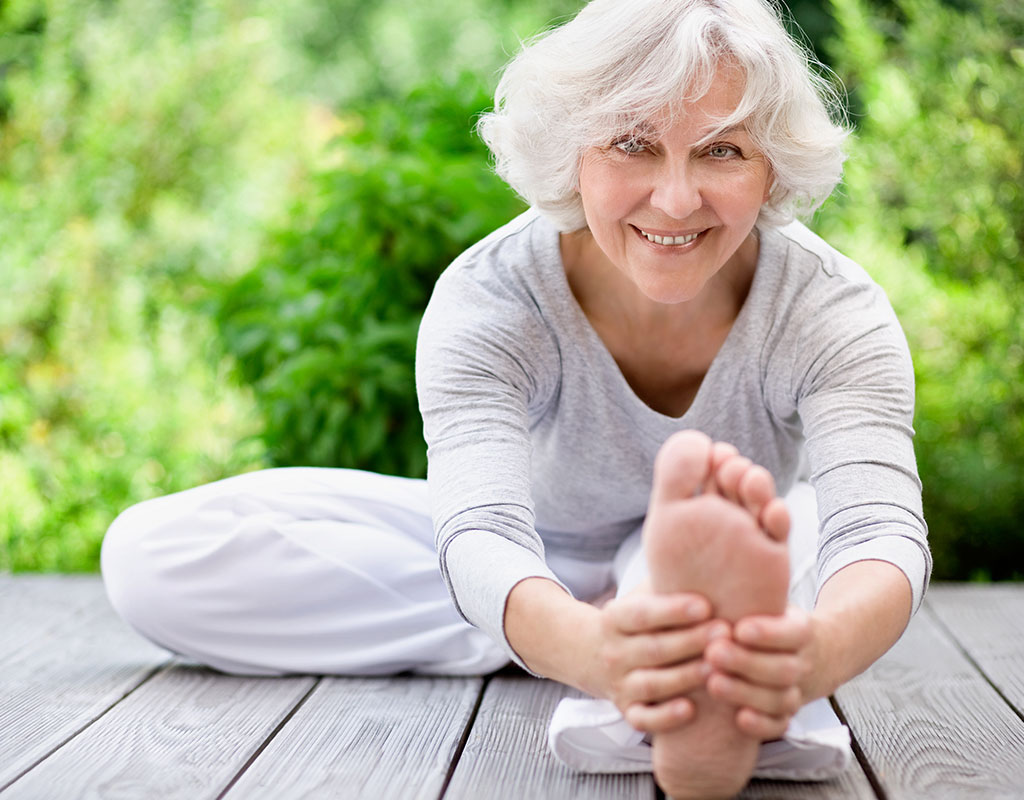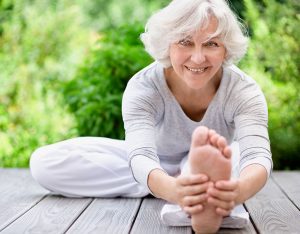
 Targeting tightness through Pilates
Targeting tightness through Pilates
One of the biggest benefits of Pilates and a goal my clients often come in with is to increase their flexibility. The most measurable of which seems to be the ability to touch one’s toes, aka hamstring flexibility. Although possible, it is not always as straight forward as performing daily static stretches. It is important to address all of the contributing factors to “hamstring tightness” to achieve an increased range of motion and henceforth “flexibility” within these muscles.
Muscle Fibre and Fascial Length
Traditional static stretching involving taking a muscle to the end of its range and holding for an extended period of time is one of the most utilised forms of increasing muscle length. Research regarding the effectiveness of static stretching has been conflicting, some studies have found an immediate increase in hamstring length straight after static stretching (O’Hora et al, 2011), others have found that muscle length gains decline after 15 minutes (de Weijer et al, 2003) and most studies have found some benefit over control groups (no stretching at all). Despite conflicting evidence, static stretching is still a widely practised form of muscle lengthening and if performed regularly, can help improved myofascial length.
Another popular way of increasing muscle flexibility is to perform eccentric and dynamic exercises through large ranges of motion. Eccentric exercises involve the muscle lengthening as it contracts and is thought to produce larger gains in myofascial fibre length than static stretching alone. Pilates exercises include many varied eccentric movements, of particular use for hamstring flexibility, is feet in straps series.
Massage and self-myofascial release are also great ways to increase a myofascial length and should be utilised in conjunction with static and dynamic stretching.
Neural Tension
Neural tension refers to the body’s protection of the peripheral nerves to lengthening movements (including bending forward, straight leg raise etc). Neural tension can be present as a natural anatomical variant or can present following injury or poor posture anywhere along the nerve pathways. In the presence of neural tension, the muscles that surround the nerve paths become overactive and “on guard” to prevent full lengthening (tensioning) of that nerve and can, therefore, feel solely like muscle tightness. Addressing neural tension via nerve glides and mobility exercises is an important part of the puzzle in improving flexibility. Nerves tend to be sensitised and irritated by holding the end of range static stretches and respond far better to exercises that gentle take them to the end of their range and then ease off and repeat. Many Pilates exercises involve neural gliding, which helps to encourage lengthening and desensitisation of the nerves to tension. For example, running on the reformer is not just a calf stretch, but also a neural glider exercise.
Spinal Stiffness
A major component to “touching the toes” flexibility and neural flexibility is spinal segment mobility. If the joints in the spine are unable to bend, the spinal column becomes a stiff rod and hence, can make it very difficult to bend forward far enough to touch your toes. It is important for our functional activities of daily living, that we can achieve at least close to this range, for movements such as unstacking the dishwasher, putting on shoes and picking up objects from the ground. If due to injury or lack of flexibility, you are unable to achieve close to this range, spinal joint stiffness may be a contributing factor. Joseph Pilates believed that “if your spine is stiff at 30 you are old, if your spine is completely flexible at 60, you are young”. Spinal stiffness can also increase neural tension and therefore, decrease flexibility too. Exercises such as pelvic curl-ups, cat curls, spinal twists and roll downs to name a few are very effective in improving segmental spinal flexibility.
Posture
No matter how much time you dedicate to improving flexibility in certain muscle groups, it will make no difference if for 80% of the rest of the day you are standing or sitting in positions which put certain muscles into their shortened range. The soft tissue in our body will adapt to imposed demands, shortening in ranges where it is held in a short position, and lengthening where it is held on stretch more often than not. Correcting your posture to a “neutral spine” is where there is an optimum length-tension relationship between the muscles, fascia and ligaments and is known to be the most stable position for us to live in. A lot of people with chronically shortened hamstrings may find upon assessment, that they are either standing in a sway back or a flat back posture and upon learning to correct this, can achieve greater flexibility within these muscles. At Q Pilates, your initial assessment with our physiotherapists will help to identify if the lack of flexibility is actually contributed to by poor posture, and you will be taught how to properly correct your position.
To conclude, in order to fully improve hamstring flexibility it is important to identify which of the above components is lacking, instead of assuming it’s just a case of tight muscles. Addressing all of the above will help you to achieve your goals of improved flexibility and decrease your injury risk and Pilates is the perfect way to go about it. A small study found that Pilates was even more effective than static, dynamic and therapist-assisted stretching on hamstring flexibility and we certainly see that anecdotally in our studios (Chinnevan et al, 2015).
References:
- O’Hora et al (2011). Efficacy of static stretching and proprioceptive neuromuscular facilitation stretch on hamstrings length after a single session. Journal of strength and conditioning research. Vol 25, Issue 6 Pg 1586-91
- de Weijer et al (2003). The effect of static stretch and warm-up exercise on hamstring length over the course of 24 hours. Journal of orthopaedic and sports physical therapy. Vol 33, issue 12 Pg 727-33.
- Chinnavan et al (2015). Effectiveness of pilates training in improving hamstring flexibility of football players. Bangladesh Journal of Medical Science. Vol 14, issue 3 pg 265-9.

